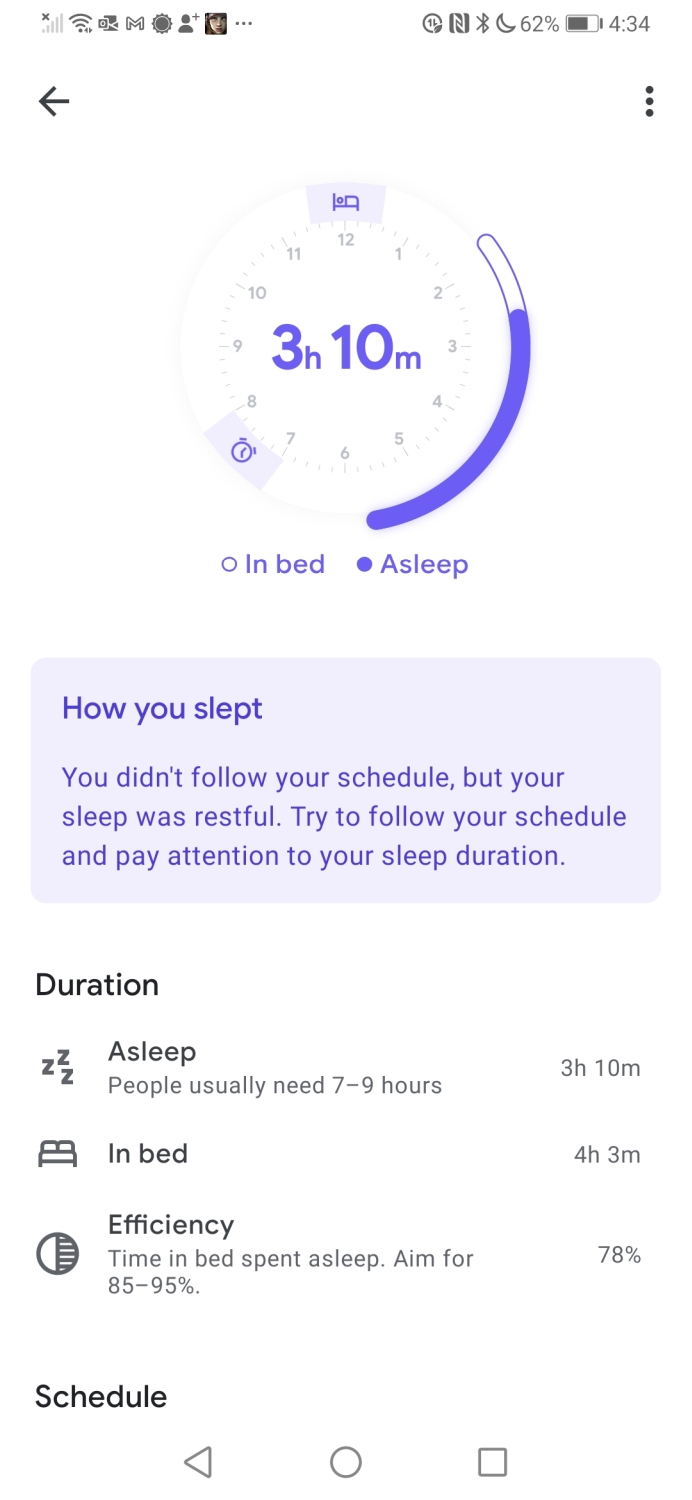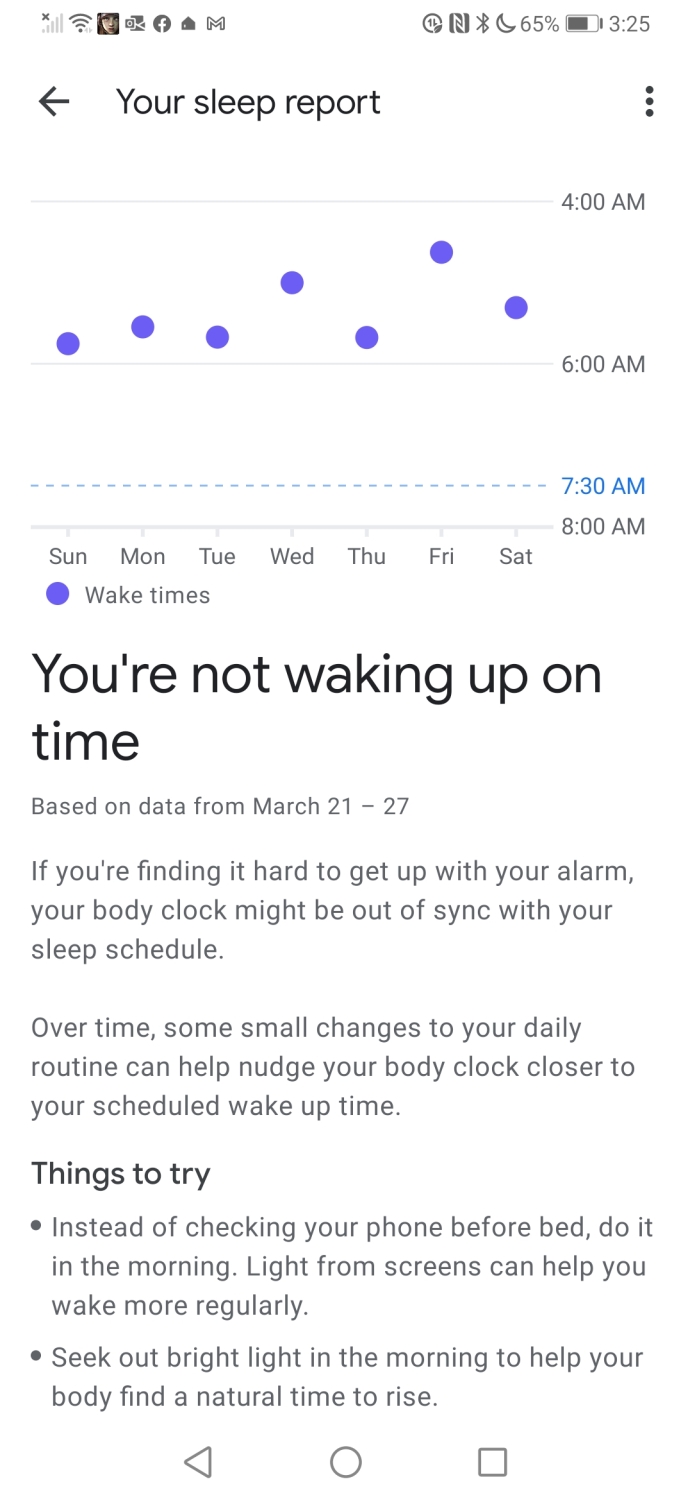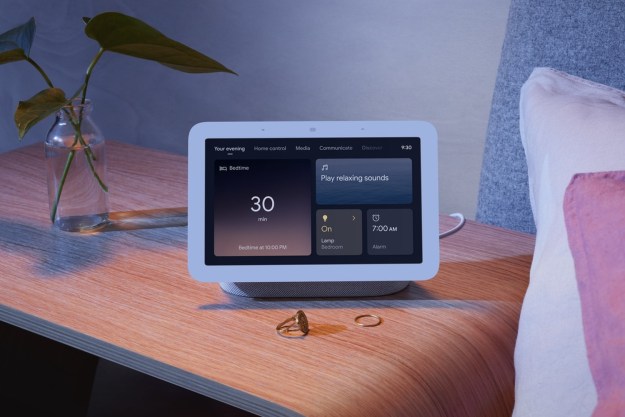“The Google Nest Hub (2nd Gen) offers accurate sleeping tracking without the discomfort of a wearable thanks to its Sleep Sensing feature.”
- Accurate sleep tracking
- Tons of data about your sleep
- $100 starting price
- Few new features over previous model
The smart home’s roots go back far before Google Assistant ever became a virtual assistant in the home, but it wasn’t until the arrival of the Nest Hub in 2018 that we were given a true hub to control the smart home. Since then, we’ve seen countless smart displays released, including a big brother in the Nest Hub Max, which boasted a front-facing camera that diversified its functionality beyond just acting as a smart display.
The new Google Nest Hub (2nd Gen) distinguishes itself from any other smart display out there with its sleep-monitoring ability. It’s an addition you wouldn’t necessarily expect, especially in a smart display, but is it enough to make it a proper successor?
Wearable-free sleep tracking
There was a time when I was tracking my sleep at night, with the help of either a fitness tracker or smartwatch. I found the information they gathered useful, but the reason why I stopped boiled down to two things — they needed to be recharged (daily, in the case of most smartwatches) and having something on my wrist as I fell asleep was not comfortable. The thought of tracking sleep without physically wearing something certainly has immense appeal to me.

That’s exactly the main selling point of Sleep Sensing with the Google Nest Hub (2nd Gen). Thanks to Soli technology that detects my movement and breathing, the radar-sensing system means I’m able to go to sleep without the need for a wearable — eliminating the worries I have with other traditional trackers. Best of all, the discreet fashion in how it achieves its sleep-tracking abilities is made better knowing that it works without any interaction on my part.
Surprisingly accurate
At first, I was skeptical about how well the Google Nest Hub (2nd Gen) could track and monitor my sleep. I found out after the first night how surprisingly accurate it is. After enabling Sleep Sensing and punching in my typical sleep and wake times, there’s nothing else required on my part for it to work — except to sleep, of course.
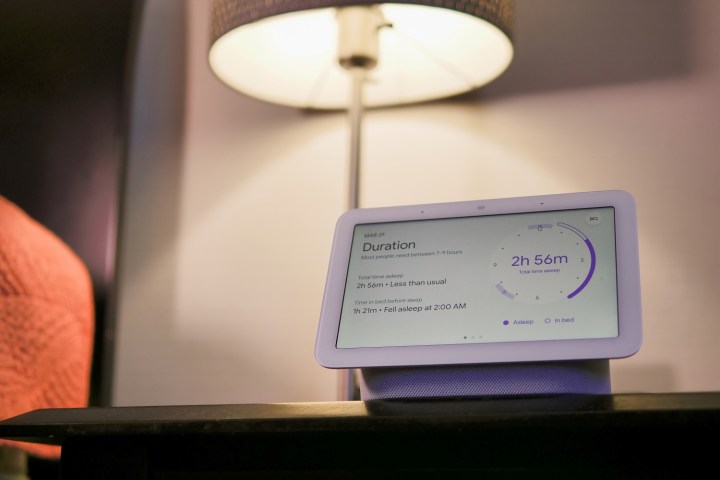
Upon waking up the next morning and asking Google Assistant how I slept, a dashboard pops up on the smart display breaking down all the juicy details. I’m even more astounded by some of the stats it populates from my sleep, like how long it took me to fall asleep from the moment I got into bed (took me 1 hour and 25 minutes on a weekend) and the time it took for me to get out of bed once I woke up (46 minutes). It can even measure my respiratory rate, which at 17 respirations per minute (rpm) is considered average.
Sleep Sensing also monitors my sleep for snoring, coughing, and restless periods — all to determine my sleep efficiency. Based on the data, I’m nowhere close to attaining the 85% to 95% efficiency rating I’m supposed to strive for with my sleep. This makes sense considering that the Google Nest Hub (2nd Gen) knows that I’m getting up from bed and “waking up” at around 5:00 a.m. on most weekdays, which is accurate because that’s when the cats begin to trample all over me. That’s how I know that the Nest Hub’s Sleep Sensing is accurate, even when my fiancé’ is in bed sleeping beside me.
You can also use the Google Fit app on a smartphone to inspect all the details. Although, I find it a little annoying having to download yet another app to view the information. It would be more useful in my opinion to have it integrated with the Google Home app, since it’s the app that I use for controlling my smart home devices.
Sleep tracking isn’t for everyone
If you’re like me and have a particular sleeping routine, such as one that involves cats waking you up and forcing you to sleep on the couch, the Nest Hub’s sleep-tracking feature won’t have much usefulness — mainly because the data won’t paint an accurate portrayal of your sleep. That’s unless I take the Nest Hub with me to the couch or something, but who’s going to do that? For me, sleep tracking isn’t a main selling point that I would seek out with a smart display.
I’m even more astounded by some of the stats it populates from my sleep.
Nevertheless, I can appreciate how knowledge is power. There’s actually a sleep report that looks at sleep data and offers some tips on how to improve it. In my case, I’m told to stop checking my phone before bedtime, and to do it when I wake up instead. Eventually, the sleep monitoring definitely paints an accurate picture of my sleep — something I’m not getting enough of during weekdays, thanks to the cats. Another obvious pattern that’s validated by the Nest Hub (2nd Gen) is my sleeping in during weekends.
Same old, same old
There’s an obvious reason why I spent a lot of time talking about Sleep Sensing. Quite frankly, there’s very little distinguishing this latest model from its predecessor. Everything else about this smart display is no different. From its 7-inch LCD touchscreen, which I’ll again admit is a feast for the eyes because of how it realistically makes photos lifelike thanks to its Ambient EQ mode, to its compact design complete with a similar fabric covering for its base, there’s nothing terribly different about it.
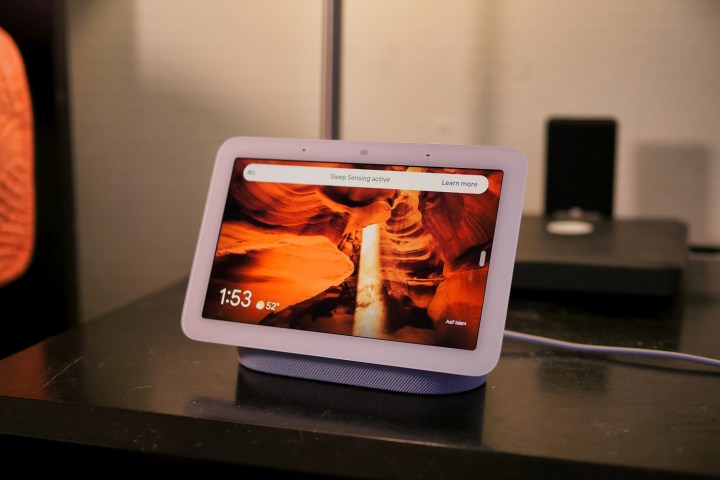
Because it’s a smart home hub, you’ll still be able to access and control many of your connected devices at home — both through voice actions with the help of Google Assistant or by interacting with the various dashboards on the screen. What’s missing here is a camera, something I honestly would prefer having because of the additional utility it would provide.
Bedside companion
This brings me to my last point of it being more of a bedside companion because of the lack of a camera. Without one, people are still likely to put it in their bedroom, which makes perfect sense because the marquee feature here is sleep tracking. It’s somewhat pointless to put it anywhere except by your bedside.
While it could technically live on your work desk, kitchen counter, or living room coffee table, much like any other smart display with similar-sized displays, you’re effectively negating its most notable feature.
Our take
It’s a tough call for the Google Nest Hub (2nd Gen) primarily because if you take its Sleep Sensing out of the equation, it’s effectively the same smart display we’ve seen before. Thankfully, the starting cost of this model is $100, which is still better than the $149 initial cost of the original Google Nest Hub. Unless you’re really adamant about your sleeping, it’s hard to justify choosing this over other recent smart displays.
How long will it last?
Google’s sustainability effort is showcased again here with the Nest Hub (2nd Gen). It’s constructed from 54% recycled plastic, which contributes to its lightweight feel. Despite this, it feels solidly constructed and I’m confident it can survive most falls from short heights. There’s a one-year limited warranty that covers defects.
Is there a better alternative?
Similar in size and stature, the Lenovo Smart Display 7 is the most logical alternative because it covers the base features while also packing a camera that can be used for video phone calls. The Google Nest Hub Max, despite its pricier $229 cost, remains the undisputed king of smart displays because it can soundly replace three products — a powerful smart speaker, smart display, and security camera.
If Google’s ecosystem isn’t your cup of tea, the Amazon Echo Show 8 and Echo Show 10 (3rd Gen) are perfect solutions if you prefer Alexa.
Should you buy it?
Yes, if sleep matters to you and you don’t want to be bothered by pesky wearables, then you’ll fall in love with it. If not, you’re better off trying to find the older model at a discount.
Editors' Recommendations
- Echo Show 8 vs. Nest Hub: Does Amazon or Google offer the best smart display?
- The ‘Look and Talk’ feature means you don’t have to say ‘Hey Google’
- Amazon Echo Show vs. Google Nest Hub
- Google Nest Hub (1st Gen) vs. Google Nest Hub (2nd Gen)
- Google Nest Hub Max vs. Amazon Echo Show


